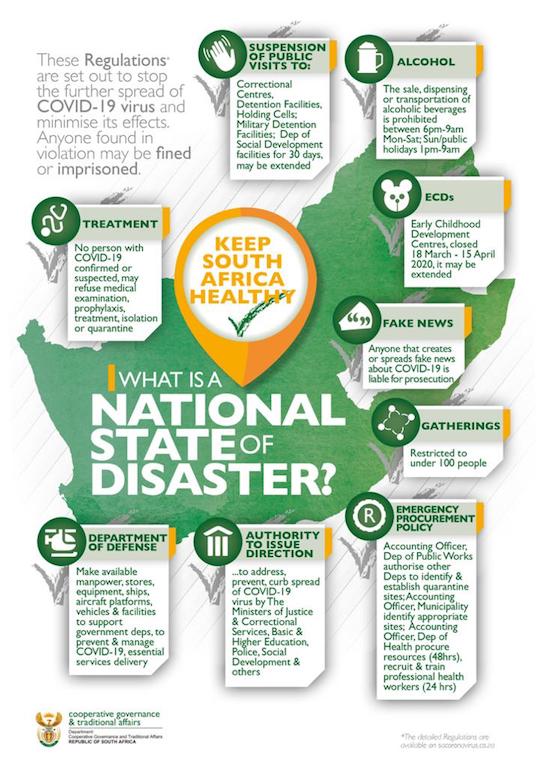President Cyril Ramaphosa and Cabinet were presented with clear guidelines on how to combat the spread of the novel coronavirus over the weekend, including steps they would need to take immediately to mitigate the impact of the epidemic.
News24 reported on Thursday that before Ramaphosa announced stringent measures to fight the infection rate, his government was shown epidemiological projections that were prepared for the Department of Health that painted a dire picture.
The projections, which are not final or concrete, stated that anywhere between 87 900 and 351 000 people in the country could die if the government’s response was slow or inadequate.
On Thursday evening, Health Minister Zweli Mkhize said it was possible that 60% to 70% of the population could be infected during a question and answer session with doctors of the South African Medical Association.
As of Friday 20 March, South Africa had 202 confirmed cases, while the first patient diagnosed was said to be almost fully recovered, and no deaths had been reported.
According to the initial projections that spurred Ramaphosa into action, the death toll could be 87 900 if just 10% of the population was infected – but this number is likely to change as updated and more dynamic models are finalised by experts.
At the same time, experts from the National Institution for Communicable Diseases (NICD) advised the Ramaphosa government on “essential interventions to contain and mitigate Covid-19 transmission”, broken down into three main categories:
1. Detection and containment of imported cases
Experts advised that high- and medium-risk countries should be identified, quarantine restrictions should be placed on South Africans returning from abroad and a travel ban should be instituted on persons travelling from high-risk countries.
The countries identified in an accompanying graph were Italy (which as of Thursday evening had become the country with the highest death toll, surpassing China), China, South Korea and Iran.
2. Prevention of onward transmission of identified cases
Experts advised measures including health promotion, flu vaccines and social distancing measures which included discouraging international travel, the limitation of and size of mass gatherings and the closure of schools and other institutions.
Further steps included increased testing, contact tracing and scaling up of hospital services including the creation of mass care centres.
3. Tracking the outbreak
Here the experts advised the creation of a website with data on cases and their locations as well as surveillance for Covid-19 and the commissioning of epidemiological models to project the infection rates and impact on the health system.
These measures would contribute to “flattening the curve” – a technical term used in reference to taking steps to extend the time frame of the infection rate. That means that over time, less people could get infected at a slower rate – giving decision-makers valuable time to put further plans into action to assist those who fall ill.
At any significant rate of infection, the country’s health system is unlikely to be able to absorb the impact, the data shows.
Key challenges
The NICD also identified several areas that represented “key challenges and gaps” in the state of readiness of the country, including:
- Laboratory testing to be rolled out across the National Health Laboratory Service as well as the interpretation and understanding of test results by health care workers and the public. Mkhize said SA should be able to conduct 30 000 tests a day by mid-April.
- Making social distancing “real” by drawing up new guidelines for the transport industry as well as shebeens, bars and taverns.
- Minimising the impact of infections on health care workers.
- Scaling up of contact tracing efforts.
- Addressing the needs of health care workers to ensure they felt safe.
- New requirements for patients to meet before being administered with oxygen or placed on a ventilator at hospitals.
- Managing the two extreme social responses – panic and apathy – particularly around the closure of schools and panic buying.
Since Sunday, Ramaphosa and other government officials have instituted numerous measures to address these key gaps in the response.
Schools closed as of 18 March, new regulations to prevent price gouging on a list of essential items were put in place and mass awareness campaigns have been rolled out, showing that Ramaphosa and his Cabinet have heeded this advice.
Source: News 24


